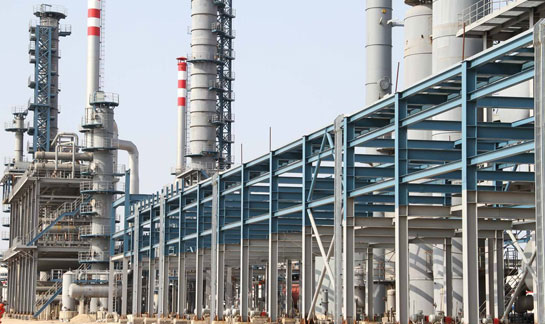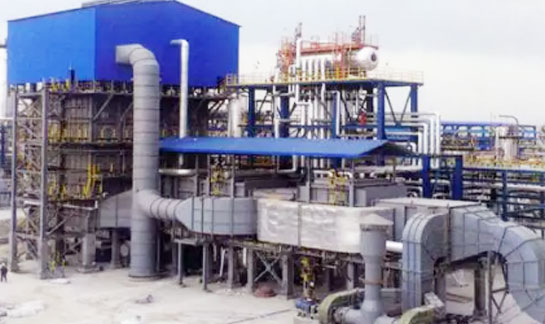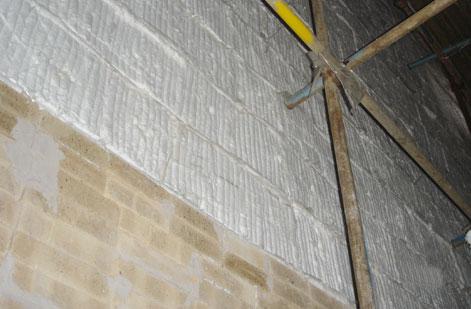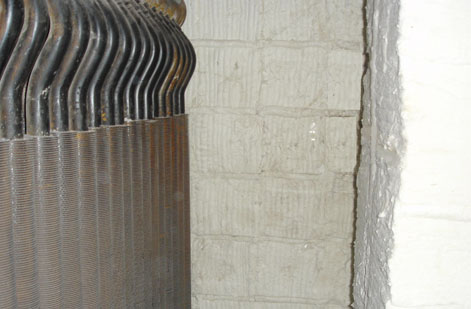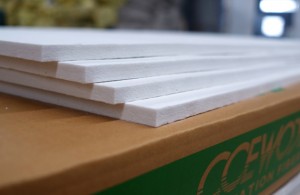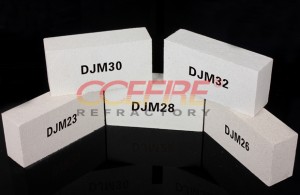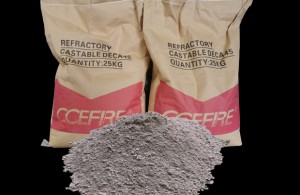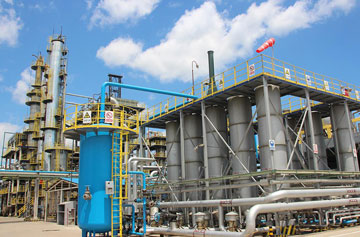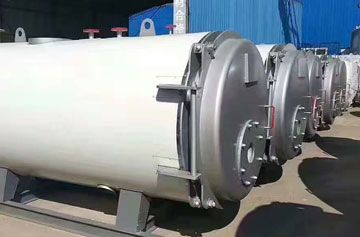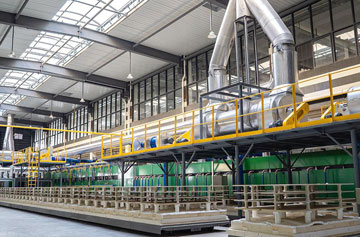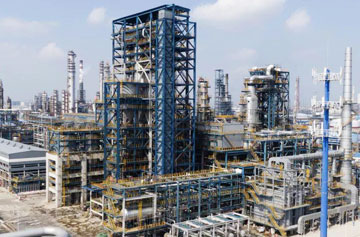Design and construction of a one-stage reformer
Overview:
The one-stage reformer is one of the key equipment to the large-scale synthetic ammonia production which has the process as follows: To convert CH4 (methane) in raw gas (natural gas or oil field gas and light oil) into H2 and CO2 (products) by reacting with steam under the action of catalyst at high temperature and pressure.
The furnace types of the one-stage reformer mainly include a top-fired square box type, a side-fired double-chamber type, a small cylinder type, etc., which are fueled by natural gas or purge gas. The furnace body is divided into a radiation section, a transition section, a convection section, and a flue connecting the radiation and convection sections. The operating temperature in the furnace is 900~1050℃, the operating pressure is 2~4Mpa, the daily production capacity is 600~1000 tons, and the annual production capacity is 300,000 to 500,000 tons.
The convection section of the one-stage reformer and the side walls and the lower part of the end wall of the side-fired double-chamber one-stage reformer’s radiation chamber should adopt high-strength ceramic fiber castable or lightweight bricks for lining due to the high airflow velocity and high requirements for wind erosion resistance of the inner lining. Ceramic fiber module linings are only applicable to the top, side walls and end walls of the radiation chamber.
Determining lining materials
According to the operating temperature of the one-stage reformer (900~1050℃), related technical conditions, the generally weak reducing atmosphere in the furnace, and based on our years of fiber lining design experience and furnace production and operation conditions, the fiber lining materials should adopt CCEWOOL high-aluminum type (small cylindrical furnace), zirconium-aluminum type, and zirconium-containing ceramic fiber products (working surface), depending on different operating temperatures of the one-stage reformer’s process. The back lining materials should use CCEWOOL high-aluminum and high-purity ceramic fiber products. The side walls and the lower part of the end walls of the radiation room can take light high-aluminum refractory bricks, and the back lining can use CCEWOOL 1000 ceramic fiber blankets or ceramic fiberboards.
Lining structure
The CCEWOOL ceramic fiber modules’ inner lining adopts a composite fiber lining structure that is tiled and stacked. The tiled back lining uses CCEWOOL ceramic fiber blankets, welded with stainless steel anchors during construction, and fast cards are pressed in for fixing.
The stacking working layer adopts prefabricated fiber components which are folded and compressed with CCEWOOL ceramic fiber blankets, fixed by angle iron or herringbone with screws.
Some special parts (e.g. uneven parts) on the top of the furnace adopt the single-hole hanging ceramic fiber modules made of CCEWOOL ceramic fiber blankets to ensure a firm structure, which can be constructed simply and quickly.
The fiber castable lining is formed by welding "Y" type nails and "V" type nails and cast on site by a moldboard.
The form of lining installation arrangement:
Spread tiled ceramic fiber blankets which are packaged in 7200mm long and 610mm wide rolls out and straighten them flatly on the furnace wall steel plates during construction. Generally, two or more flat layers are needed with the in-between distance of over 100mm.
The central hole hoisting modules are arranged in a “parquet-floor” arrangement, and the folding module components are arranged in the same direction in sequence along the folding direction. In different rows, the ceramic fiber blankets of the same material as ceramic fiber modules are folded into a "U" shape to compensate for fiber shrinkage.
Post time: May-10-2021


